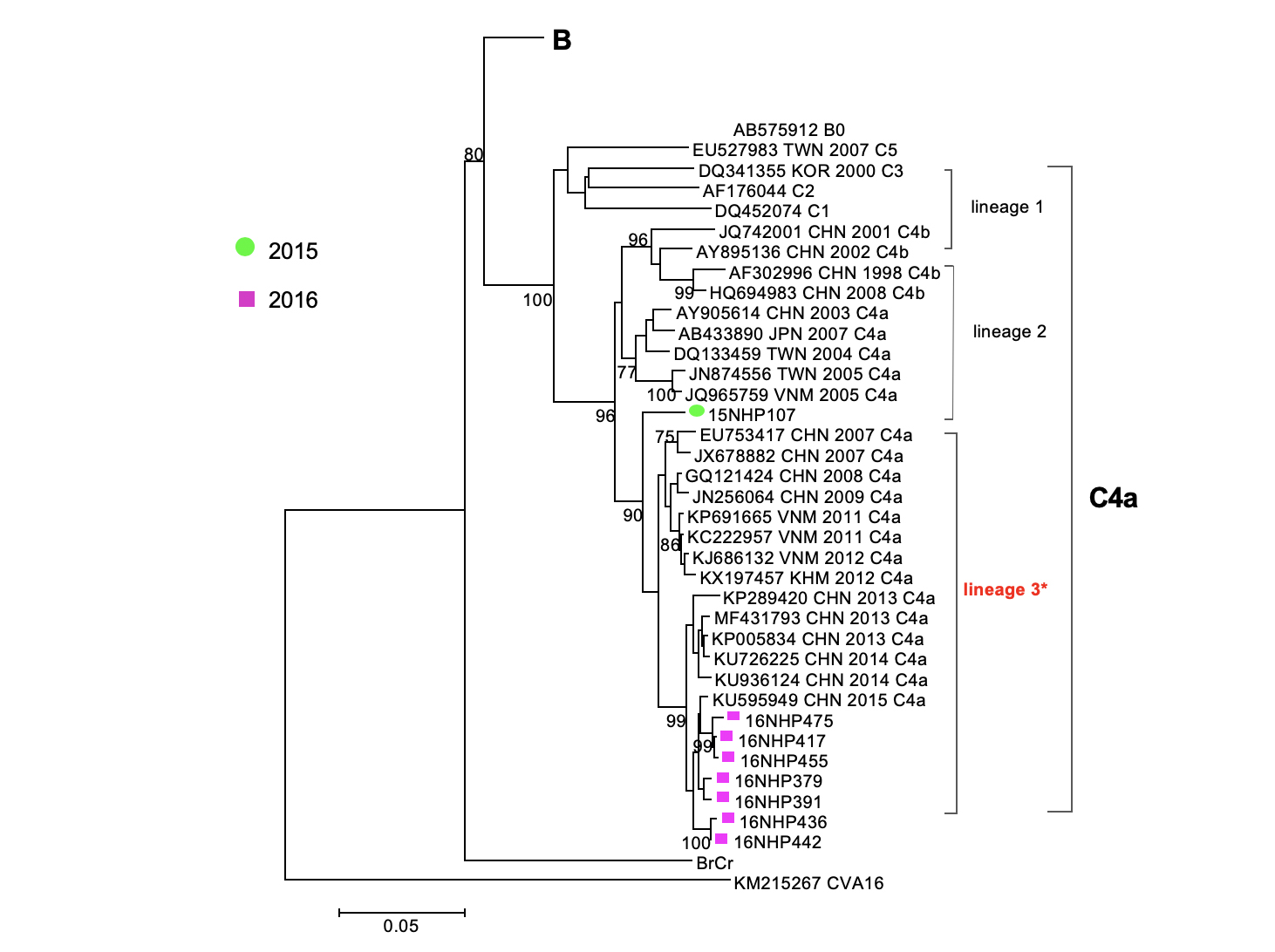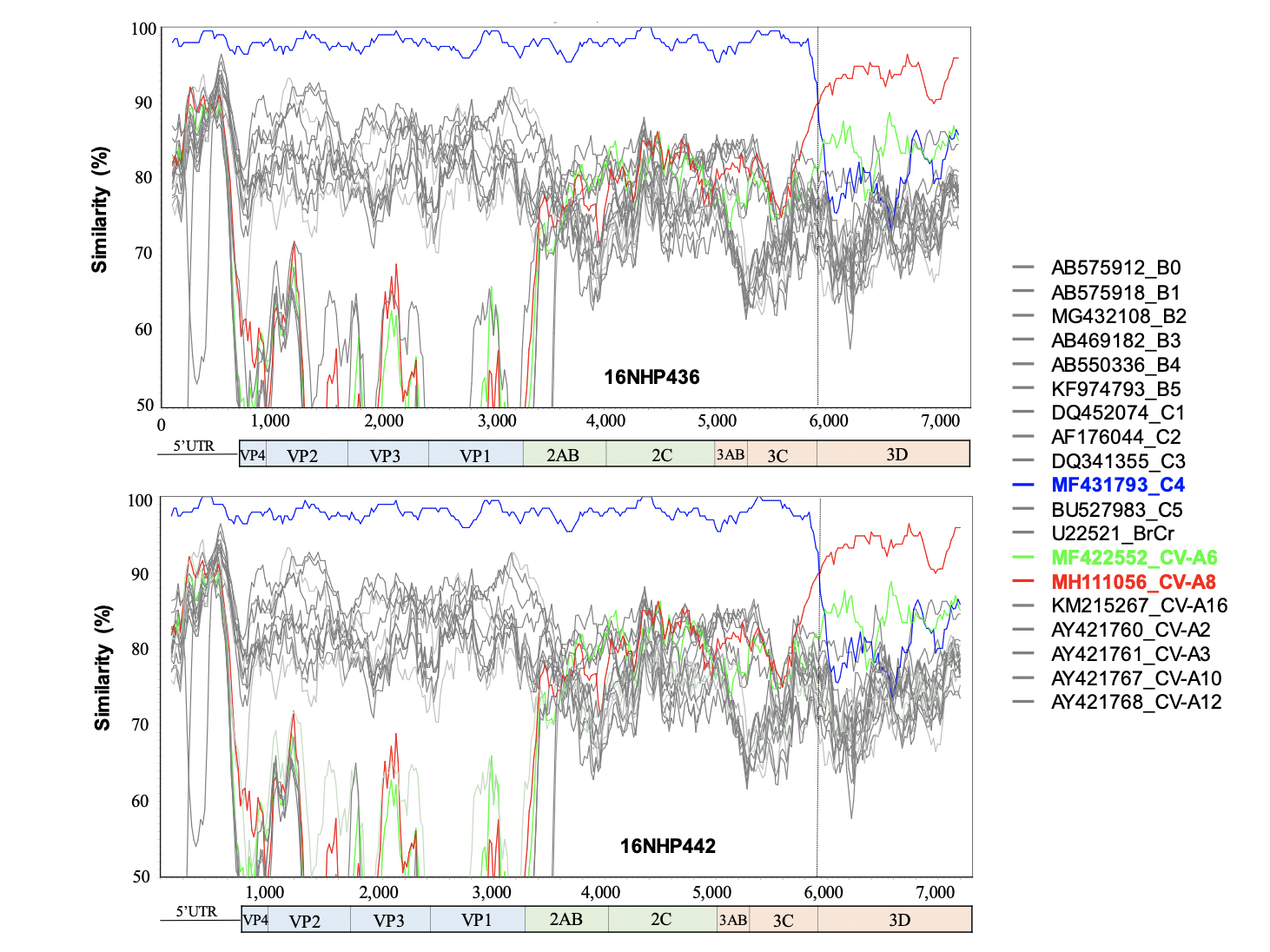Abstract:
Researchers from Kanazawa University have found a new sublineage of enterovirus A71 (EV-A71) C4 subgenotype with two possible recombinant strains during the 2015–16 outbreak of hand-foot-and-mouth disease in Hanoi, northern Vietnam. Further, they confirmed that the EV-A71-C4 subgenotype may be more virulent than the B5 clinically and experimentally with transgenic mouse model. This has helped elucidate the outbreak and may identify candidate viral strains for developing polyvalent vaccines.
Kanazawa, Japan – Hand-foot-and-mouth disease (HFMD) is an acute viral infection that usually affects infants and children below five years. In a study published in Scientific Reports in January 2020, an international research team including Kanazawa University, the Vietnam National Hospital of Pediatrics, Tokyo Metropolitan Institute of Medical Science, Nagasaki University and Hanoi Medical University, has demonstrated the emergence of a new enterovirus (EV) A71-C4 lineage during the 2015–2016 outbreak of HFMD in northern Vietnam. Further, through clinical studies and an experimental mouse model, they have shown that EV-A71 C4 subgenotype may be more virulent than the B5 subgenotype.
HFMD is a common contagious childhood illness caused by enteroviruses of the family picornaviridae, the most frequently reported being EV-A71, coxsackievirus A16 (CV-A16), and CV-A6. It typically runs a mild self-limiting course; however, in rare cases it may cause inflammation of the meninges and the hindbrain, resulting in paralysis, cardiopulmonary complications, or even death. While most cases resolve within a few weeks, EV-A71 infections may be more severe, with serious complications.
To determine the epidemiological characteristics and identify the various enterovirus strains responsible for HFMD in northern Vietnam, the research team collected and analyzed throat and rectal swabs from 488 affected children in Hanoi.
Son T. Chu, lead author of the study, explains: “CV-A6 was the most common strain, followed by EV-A71. Of these EV-A71, 92.1% were the B5 subgenotype and 7.9% were the C4 subgenotype. Whole-genome sequencing showed that seven of the eight C4a strains formed a new lineage, including two possible recombinants between EV-A71-C4 and CV-A8 strains.”
The researchers evaluated the proportion of inpatients as a clinical measure of virulence. Hospitalized children with EV-A71 significantly outnumbered those with CV-A6. Further analysis among the EV-A71 infected children showed that the proportion of inpatients among C4-infected was significantly higher than that among B5-infected, implying greater virulence of C4 than B5.
“As the number of C4-infected patients was small, we applied another technique to compare virulence,” says Kyousuke Kobayashi, neurovirologist and lead author. “We inoculated transgenic mice susceptible to EV-A71 infection with viral isolates and monitored them for limb weakness, acute flaccid paralysis, body weight and death. We found increased paralysis and significantly higher mortality among mice infected with C4 strains than those infected with B5 strains.”
HFMD is an emerging public health problem with periodic large outbreaks in pediatric populations in East and Southeast Asia. Currently, there is no approved antiviral drug against EV-A71 and the best strategy to mitigate its impact is to develop appropriate vaccines. Though inactivated vaccines exist, more suitable candidate strains may be identified from among the newly emerged EV-A71-C4 strains for developing live attenuated vaccines.

Figure 1.
In phylogenetic tree of EV71 strains based on complete VP1 gene sequence, a new C4a-lineage of EV-A71 strains was found in northern Vietnam in 2016, designated as “C4a-lineage 3”.

Figure 2.
Two EV-A71 strains may be recombinant between EV-A71 C4 and CV-A8.
Article
Newly emerged enterovirus-A71 C4 sublineage may be more virulent than B5 in the 2015–2016 hand-foot-and-mouth disease outbreak in northern Vietnam
Journal: Scientific Reports
Authors: Son T. Chu, Kyousuke Kobayashi, Xiuqiong Bi, Azumi Ishizaki, Tu T. Tran, Thuy T. B. Phung, Chung T. T. Pham, Lam V. Nguyen, Tuan A. Ta, Dung T. K. Khu, Masanobu Agoh, An N. Pham, Satoshi Koike & Hiroshi Ichimura
DOI: 10.1038/s41598-019-56703-5
Funder
This study was supported by the Japan Society for the Promotion of Science under Grant Number 18H02667 and AMED under Grant Number JP18fk0108004.



 PAGE TOP
PAGE TOP